#ecole national du cirque
Text
LA 1° EDIZIONE DEL ROMA CIRC FEST

LA 1° EDIZIONE DEL ROMA CIRC FEST
Dal 16 settembre al 14 ottobre va in scena a Roma (con alcuni appuntamenti al Teatro del Lido di Ostia) la 1° edizione di "RomaCircFest#chapeau!" Festival internazionale di circo contemporaneo.
Il progetto del festival nasce dalla volontà di portare a Roma il circo contemporaneo inteso come il circo di oggi, espressione artistica dei nostri tempi capace di affascinare spettatori di ogni età e cultura e di conquistare la critica.
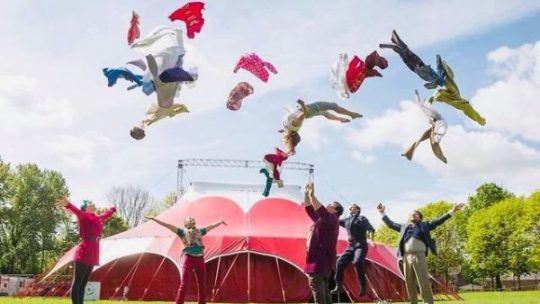
Arte multidisciplinare per eccellenza – performance acrobatiche, arti di strada, teatro fisico, danza, musica, arti visive. Capace di far convivere circo popolare e sperimentazione, virtuosismo tecnico estremo e momenti di poesia circense, grandi formazioni e artisti solisti.
Uno spettacolo godibile in teatro come sotto chapiteau, in strada o sotto le stelle in un parco.
GLI ORGANIZZATORI
La Decima Arte - Nata nel 2014, con il progetto RomaCircFest#chapeau! l’ APS La Decima Arte nel 2022 è stata riconosciuta dal Ministero Italiano della Cultura. L’Associazione sostiene la diffusione delle arti circensi e performative attraverso il festival RomaCircFest#chapeau!, promuove la divulgazione della conoscenza e della pratica delle arti del circo contemporaneo tra le nuove generazioni attraverso il Young Circus Festival, con workshop specialistici supporta la formazione di figure professionali di settore, attraverso le residenze artistiche del festival RomaCircFest#chapeau! sostiene il lavoro delle compagnie e degli artisti di circo e promuove il network del circo contemporaneo in ambito regionale, nazionale ed europeo.

Massimo Albano, direttore de La Decima Arte, ha un Master in Management des Arts du Cirque presso l’Università di Louvain-la-Neuve e studi presso l’ENC (Ecole Nationale de Cirque de Montréal).
Valeria Campo, Direttrice Artistica - E’ regista, docente di arti sceniche, clowning, direttrice artistica di eventi e festival di circo contemporaneo. Presidente della Commissione Circhi e Spettacolo Viaggiante del MIC dal 2014 al 2021, con Alessandro Serena è autrice del libro Conoscere, creare e organizzare circo, Editore Franco Angeli (Milano), 2019.
Si occupa di circo contemporaneo dagli anni 90, collaborando con realtà internazionali quali ENC (Ecole Nationale de Cirque de Montréal) e NICA National Institute of Circus Arts di Melbourne, Australia.

I LUOGHI DEL FESTIVAL
La magia del circo in un parco nel cuore di Roma - Il festival ha la sua casa nel parco di due ettari di Via delle Terme di Traiano 2, adiacente al Parco Oppio, noto per essere il parco del Teatro Brancaccio. E’ un parco culturale che ha una vocazione legata alle arti, all’insegna della contaminazione e della multidisciplinarità: circo, teatro, danza, musica, arte contemporanea.
Inaugurato nel settembre 2021, e con alle spalle una storia centenaria , il parco è accessibile anche dal Teatro Brancaccio, sala storica della città di Roma situata in Via Merulana, nello storico quartiere Esquilino.
TEATRO, CHAPITEAU E NON SOLO
Il Teatro Brancaccio per show internazionali di circo contemporaneo su palco. Lo chapiteau Brancaccino open air per spettacoli di circo popolare. Lo spazio Il Cubo dedicato alle attività per i bambini. Il teatro del Lido di Ostia per un festival diffuso nella città.
Lo chapiteau Brancaccino open air nel parco risponde a una scelta artistica e poetica: la sola vista dello chapiteau da sempre preannuncia a grandi e piccoli un qualcosa di eccezionale e festoso: il circo.
La pista attorno a cui si stringe il pubblico provoca un coinvolgimento che affonda le sue radici nel senso più profondo e antico della festa, a cui il circo regala un senso di rito collettivo attorno a uno spazio circolare.

Il programma propone diverse compagnie di circo contemporaneo italiane e internazionali e il nuovo spettacolo di Leo Bassi 70 anni: Leo Bassi, creato dall’artista per celebrare il suo 70° compleanno che vede il clown di fama mondiale ripercorrere la propria avventurosa vita cosmopolita attraverso pellicole 8 millimetri girate dal padre quando lui era piccolo, con racconti incredibili animati dal suo atavico spirito provocatore e irriverente, motore di tutti i suoi spettacoli. Leo Bassi discende, come è noto, da una famiglia di giocolieri e antipodisti imparentata con i Bouglione, che ha girato negli anni Cinquanta e Sessanta nei più importanti circhi e varieté d'Europa, fin quando ha intrapreso il percorso artistico autonomo che tutti conosciamo per la sua capacità di trasmettere messaggi dissacranti attraverso l'arte della risata e della provocazione.
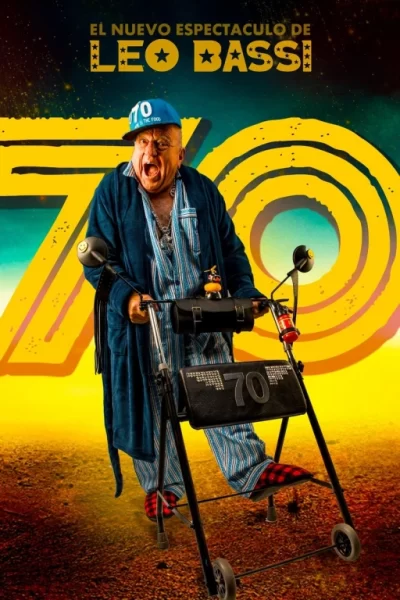
Per conoscere il programma completo e i dettagli sui biglietti e sugli spettacoli vi invitiamo a visitare il sito https://romacircfest.it .
LA 1° EDIZIONE DEL ROMA CIRC FEST
Se questo articolo ti è piaciuto condividilo sui tuoi social utilizzando i bottoni che trovi qui sotto
Read the full article
0 notes
Video
"Pinocchio" par les Dramaticules from Les Dramaticules on Vimeo.
"Pinocchio" d'après "Les Aventures de Pinocchio" de Carlo COLLODI
Avec
Pierre-Antoine BILLON : Le Renard, Arlequin, Lucignolo
Julien BUCHY : Geppetto, le Perroquet, la Fouine
Anthony COURRET : Le Chat, le Paysan, le Cocher
Jonathan FRAJENBERG : Le Grillon qui parle, Mangiafuoco, le Directeur du cirque
Jérémie LE LOUËT : Pinocchio
Dominique MASSAT : La Fée bleue et la Narratrice
Adaptation et mise en scène : Jérémie LE LOUËT
Scénographie : Blandine VIEILLOT
Construction : Guéwen MAIGNER
Costumes : Barbara GASSIER assistée de Noémie REYMOND
Stagiaire costumes : Marion THOMASSON
Vidéo : Jérémie LE LOUËT
Lumière : Thomas CHRETIEN
Son : Thomas SANLAVILLE
Factrice de marionnette : Manon DUBLANC
Régie : Thomas CHRETIEN et Thomas SANLAVILLE
Direction de production : Noémie GUEDJ
Production Les Dramaticules
Coproduction Le Théâtre de Chartres (28), le Prisme-Théâtre municipal d'Elancourt (78), le Théâtre de Châtillon (92), le Théâtre d'Auxerre-Scène conventionnée d'intérêt national (89)
Avec l'aide à la création du Conseil régional d'Île-de-France et du Conseil départemental du Val-de-Marne
Résidences de création au Théâtre Jean Vilar de Vitry-sur-Seine (94), au Théâtre de Châtillon (92) et au Cresco à Saint-Mandé (94)
Spectacle créé le 8 octobre 2020 au Théâtre de Châtillon (92)
Images : Ecole supérieure des métiers de l'image, du son et de la création 2D-3D de Malakoff, en coordination avec l'association Focus
Montage vidéo : Thierry Guedj
Mixage son : Théo Pombet
© Les Dramaticules 2021
Plus d'infos sur dramaticules.fr
0 notes
Text
Introducing our Starter Artists

Top row: Iain Craig, Diane Thornton, Hardeep Pandhal and Nima Sene.
Bottom row: Louise Ahl, Sean Wai Keung, Sara Shaarawi and Daniel Livingston.
Last year the National Theatre of Scotland marked its tenth anniversary by launching a brand-new development opportunity for Scottish artists. We are delighted that the Starter programme is returning for 2017.
The Starter programme offers eight artists a funded residency of £2,500 to help them develop their skills, networks, and explore a new idea for a piece of theatre. From more than 170 applications, eight ideas were selected which represent the breadth and scope, imagination and ambition, of a vibrant cross-section of Scotland’s diverse theatre-making community. Involving approaches that range from script-writing and text based work; to puppetry and visual theatre; to experimental and choreographic work; to street theatre and work for children and young people. The artists will explore topics as diverse as Chinese takeaways, race and police brutality, Gaelic audio and visual installations, and the medieval Scottish tradition of flyting.
The Starter artists selected are:
Louise Ahl
Louise Ahl is a Glasgow-based artist originally from Sweden, making experimental and choreographic performance work. She creates both solo and collaborative multi-art-form pieces. In 2010 she began making work with her performance persona Ultimate Dancer, who was born as a half-joke/half-critical/wholly-serious attempt to explode and lovingly re-manifest the art form of dance.
Louise’s work is dedicated to pushing at the edges of choreography, performance and visual art, working away from narrative based performances, instead making ambitious and detailed thematic concepts for work to exist in, using movement, voice, light, sonics and language.
Iain Craig
Iain Craig is an animator, illustrator and set designer based in Glasgow. Originally from the north west Highlands and a native Gaelic speaker. His work in theatre has included creating animation, set design, illustration and graphic design for companies including A Moment’s Peace, Theatre Gu Lèor, Starcatchers, Imaginate, Macrobert and he was storyboard artist for the National Youth Theatre Commonwealth Games Athlete’s Village opening ceremony performance.
In 2013 Iain was Visual Artist in Residence at Lyra Theatre in Artspace. He is also an Associate Artist with Imaginate, having recently competed a 11 week residency with Bun-sgoil Taobh na Pàirce in Edinburgh, working with Primary 6 to create an installation-led story telling development piece.
Daniel Livingston
Daniel Livingston is a multi-skilled theatre-maker who has worked across the U.K. and internationally. He has worked on many different productions in many different roles from director, designer, scenographer, makeup artist to actor and performer. He has worked professionally with notable theatre and film companies such as Channel 4, Citizens Theatre, The Arches and Cirque du Soleil.
He is also co-founder of Inkblot Collective. Along with his professional work he has delivered many different workshops for young people to professional artists. His work merges different art forms together to create a strong visual performance.
Hardeep Pandhal
Born in Birmingham, Hardeep Pandhal now lives and works in Glasgow, having graduated with a MFA from The Glasgow School of Art in 2013 with the support of a Leverhulme Scholarship Award. He was selected for Bloomberg New Contemporaries (2013), the Glasgow International Open Bursary (2013), the Catlin Art Guide (2014) and the Drawing Room Bursary Award (2015).
Recent shows include a solo show ‘Hobson-Jobson’ at Collective Edinburgh (2015) and groups shows ‘The Vanished Reality’, Modern Art Oxford (2016) and ‘Nothing Happens, Twice: Artists Explore Absurdity’, Harris Museum, Preston (2016).
Nima Séne
Nima Séne is a performance maker from Berlin based in Glasgow. Their work questions, interrogates and celebrates obscure and known experienced facets of identity. Their agency lies in making the invisible visible, the undesirable desirable, the unknown known and the complicated, complex. Their work as a maker and as a performer/actor is situated in dance, music, film, visual art and performance. They currently work in Glasgow (spoken word and queer club performances, Transmission Gallery, acting in new Scottish short films, latest project “Bloody Love”), Berlin (Tangente Company) and have recently completed the Arts Admin BANNER graduate award scheme in London.
Sara Shaarawi
Sara Shaarawi is a playwright, translator and performer from Cairo who is now based in Glasgow. She has had her work performed at the Tron Theatre, Traverse, Village Pub Theatre, Platform and the CCA. Sara also took part in the Playwrights Studio Scotland’s 2015 Mentoring Programme and the National Theatre of Scotland’s Breakthrough Writers programme in 2016, and is one if the recipients of the 2017 New Playwright’s Award.
Other credits include dramaturg, performing and translation for ‘One Day in Spring’ (Òran Mór /National Theatre of Scotland) and ‘Here’s the News from Over There’ (Northern Stage).
Diane Thornton
Diane trained as an actor at Queen Margaret College, Edinburgh and Ecole Philippe Gaulier, London. She started off acting in London before joining an international crew of theatre-makers creating performances with communities in Kosovo and Bosnia. Those projects and her work with Contacting the World committed her to socially engaged and collaborative performances.
She performs regularly as a Clowndoctor and Elderflower with Hearts&Minds. She is co-founder of Tenterhooks, making outdoor performances and wild play projects such as the interactive family show ‘Call of Nature’ and the intimate walkabout ‘Dance wi’ the Deil’. Diane lives on the Cowal peninsula in Argyll.
Sean Wai Keung
Sean Wai Keung is a poet, performer and spoken word artist. His interests lie in the intersections between forms and he often utilises chance elements into his work. In 2013 he was awarded the Farrago Zoo Award for Best Debut Performance and his debut poetry pamphlet, to be released later this year, won the inaugural 2016 Rialto Open Pamphlet Competition. He has worked in London, Norwich and Glasgow, where he currently resides.
1 note
·
View note
Text
Korri Aulakh, swinging trapeze, dance trapeze and straps artist
Korri Aulakh started on flying trapeze at 12 years old with the London Youth Circus at what was then the Circus Space, now the National Centre for Circus Arts in London, building on his background in gymnastics and competitive trampolining. He was later accepted on to the NCCA degree course and specialised in swinging trapeze, acrobatics and dance trapeze. After graduating, Korri spent three more years training with the highly respected Russian coach Victor Fomine at the National Circus School in Montreal, and since 2015 has worked internationally on swinging and dance trapeze and also aerial straps and pole.

When we saw him appearing in the London Youth Circus show Outfoxed in 2016, his exceptional skill level and the sheer quality of his movement was clear. Korri is participating in the 38th edition of the Cirque de Demain festival in Paris, which runs from 26-29 January 2017 at Cirque Phénix. He chats to Liz Arratoon from Montreal, where he is in training at Victor's Studio (École Léotard).
Do you go to Victor's Studio quite often to train?
I haven't been since I graduated from ENC, and then I was working for Celebrity Cruises, on Celebrity Eclipse for eight months until June 2016. Then I came home, back to London, so this is the first time I've been back to my old coach and back to the school. It's been really nice.
How does the studio work?
It's private training, so you go and and either train with him in a private class or
go there and free train, which is nice because you don't have to book, you can just go and train.
Are you a Londoner?
No, I'm from Essex. I live in Chigwell. My parents were both born in London but on my mum's side my grandparents are Jamaican and my dad's side are Indian, from the Punjab.
When did you start gymnastics?
I was maybe about six or seven… but I didn't do it for very long. I did it recreationally just for fun and then I did it a bit more seriously for maybe a year or two. Then I switched to trampolining when I was 11. That was what I did competitively, that was what I loved to do. And I think it's what gave me a good foundation for trapeze, because I knew where I was twisting and how I was somersaulting. But over time, I gradually stopped trampolining and went into circus.
What level were you at?
I competed nationally, but I quit. I didn't like competing. I loved trampolining but I just hated the competitions. It was quite ironic. My mum was like: "I don't understand why you don't like competing because you always do so well in the competitions." I always won something but I just didn't enjoy it. It was too much pressure.
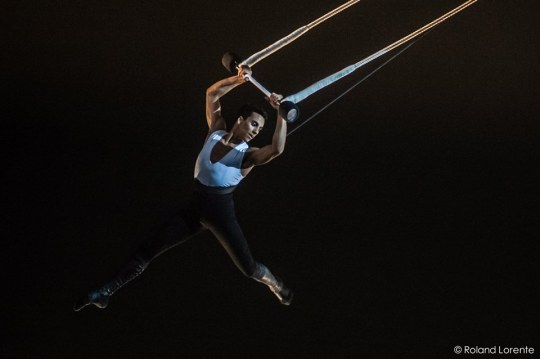
When did you first become aware of circus?
We went to Jamaica to visit my grandparents and stayed in one of those resorts that has a flying trapeze rig, basically, and like, a little circus show. The children come and do classes and try the trapeze and take part in the circus show. I was a gymnast, my cousin was also a gymnast and he went with me to train. My others cousins were dancers so there were four of us and we thought: "Ooh, this will be fun." We ended up all doing a contortion act together, which was so funny [laughs] and that's how I got into it. I tried the flying trapeze, that was 2001, and from that day I just thought, ‘This is what I wanna do'. I came back from holiday and was Googling flying trapeze and that's how the Circus Space popped up. From there, I called them, went in for an audition…
So flying trapeze, not swinging trapeze back then?
I started with flying trapeze [laughs]…
As a flyer?
I was a flyer and I'd also catch the girls. That's what I did, cradle and flying trapeze and I did it for six years on the Youth Circus. I didn't try swinging until I started the degree programme at Circus Space when I was 18.
What made you swap to swinging?
With flying I needed a troupe of people or if I did cradle I needed someone else, and at the time there was no one there who wanted to do flying or cradle so it was either straps, acro or swinging trapeze. I loved swinging and I still felt I could train other stuff alongside it because I'd been training through Youth Circus. I'd done straps then and static trapeze, so yeah.
It's not exactly an easy act to drop into a cabaret…
It's so difficult. It's a bit of a pain in the bum, to be honest. [Laughs] That's the thing cos it needs so much space, and the rigging as well gets a little confusing and difficult. You might get a place has the space but then you need four floor points to make sure it's all stable and fixed and it doesn't move. It gets really difficult but that's why the festival is perfect. There aren't many festivals that have a big enough space that allow me to swing.

There was an artist, Emma Stones, swinging in Wiesbaden, at the European Youth Circus Festival, so that's a possibility…
Oh Emma, she's a really good friend of mine. She was two years ahead of me at Montreal.
But dance trapeze gives you more options…
Literally all I work with in London is dance trapeze and straps and some acro stuff. On the ship I did dance trapeze and straps, I did pole, silks, hand-to-hand, I danced. It was like: "What can you do? We need it all." [Laughs] I was supposed to swing actually on the ship but something wasn't finished so it didn't happen. I love dance trapeze just as much as swinging. It does just give me an option to work more.
Have you considered traditional circus? It's a bit of a different life.
Yes, I have actually.
Let's just go back, why did you want to go on to Montreal after Circus Space?
Victor! Victor was there and for swinging that was kind of the best option, the best thing to do if that was something I felt strongly about and wanted to work with as much as I could. The training I would have needed to compete against other swingers, Victor was the option. There's another guy, I think in France, who also worked with Victor a long time ago. It was also the time when Lyndall Merry went to Montreal to train with Victor, swinging, and he came back to London and started swinging at the Circus Space again – I think I was in the first year – and I saw a kind of new technique that he'd brought back. The stuff that he was doing was what I wanted to do. He gave me that push to actually go and pursue it and find a way to get over to Montreal and train with Victor. I'd always heard his name from other circus people, just for swinging, but he also teaches a lot of straps; that's his gymnast's background.
Does Victor (below) still teach at the school or just in his own studio?
He teaches at the school in the mornings from, like 8.30am until about 1.30pm and then gets to the studio for 2.30pm and teaches until 9pm. It's ridiculous.

How hard did you have to work in Montreal?
School was really, really, really difficult. It was the best and worst thing, kind of. I was always so tired, I was always so sore and then you have to do it all again. I'd be at school from 7.30am until 9pm most days because obviously Victor only teaches in the mornings so a lot of my classes were at 8.30 in the morning. So I'd swing for an hour or two hours, depending on what day it was, but I'd get there at 7.30am to get ready and warm up. Then school would finish at about 4pm or 5pm and then we'd have night classes from 6pm to 9pm, which was either a French class twice a week or intro to circus arts, or rigging, or lighting or stuff like that. It was really, really difficult; really difficult.
Looking back, I don't know how I managed to get through. I remember when I left school I just chilled out for a month before I started the cruise contract. I needed that time to kind of let my body realise what had happened to it for three years. But it was great, I loved it. It gave me everything that I needed and they give you like, hours and there's so much support. I feel there's a lot of expectation still, a standard of what's expected, and that standard can be a little bit too much, but they really do push you and they just want the best for you and they want you to be the best that you can be. They just try to squeeze it out of you [laughs].
And it really paid off! What's the hardest trick you do?
The hardest… I haven't done it since I graduated. I did it for my final presentation and then I never did it ever again. It was, 'I did it, I did it, I did do it, it's on video, I've got it'. It's a triple twist…
Like a pirouette?
Yeah, and then I finish upside down in ankles, in the ropes. No one else does that. I managed to get it and I performed it but then it was like, just so much stress, and I was like, 'I can't, I can't do it'. That's the hardest thing just cos you have to do it perfectly for it to work… I didn't always do it perfectly so I was always landing kind of on the side of my leg or up in my ribs. I didn't want to injure myself anymore, you know.
youtube
Talking about injuries, what does swinging do to your hands?
It does take a toll but they're OK at the minute…
Do you wear any hand guards?
No. Obviously the more I swing, the more I train, the more callused they get, but I have to be careful because if the calluses get too big, that's when they can rip off. That happened during the Youth Circus show… I had tape on my hands for that show because my hands ripped in the dress rehearsal. It was awful, the worst thing and then having to go and do the four shows I actually had to change my routine because I couldn't hang on the bar too much or do one of the tricks I wanted to do at the end, a somersault, because it was just too painful.
I'm trying to be really careful with them now. It's difficult to balance the amount of training. I want to be as prepared as I can be but I know when I need to stop because if my hands rip before the festival it's gonna be horrible. I guess that's the bain of aerialists' lives, our hands.
Gymnasts wear…
They wear leather hand guards. I keep meaning to buy a pair online because I used to use them and they do help but I'd only use them if my hands got really sore, because ideally, because of the saltos and stuff that I wanna do I really need to be able to feel where I am on the bar and be able to let go easily when I need to. It's just one of those things that I have to deal with and just get on with.
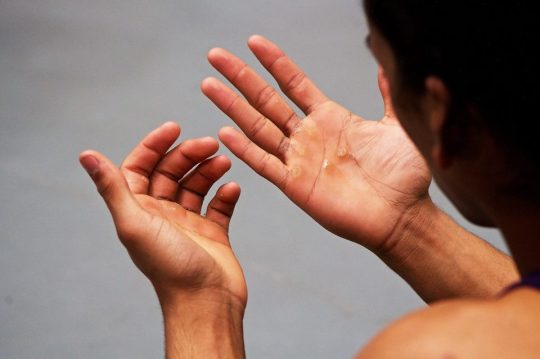
How much fun was it to go back and appear with the Youth Circus kids in Outfoxed?
It was a lot of fun and to be there with Nathan and Arthur… Nathan I'd been with at Circus Space since I was 11. I'm 24 now and it did make me think, ‘Oh my god, I can't believe it's been ten years’. It was really, really good and to work with Jack [Horner] as well, who was one of my Youth Circus teachers and he was a swinging trapezist as well. Outfoxed was great and I got to do hand-to-hand with Nathan and Arthur… if I weren't a swinging trapezist, my dream would be to be hand-to-hand flyer.
It was great to work with the circus students and to see some of them move on to the degree course. I see them there now and they always come to us for advice. I tell them, 'You need to love what you pick to specialise in'. The thing with swinging is that I love doing it. I've accepted that I might not always be able to continually work contract after contract with it but if I can do dance trapeze or straps or whatever and then do a contract with swinging I've come to terms with it. People ask me about it; swinging is like, really difficult. I wouldn't advise doing it unless you really, really love it and you know from the get-go that this isn't something you'll have contract after contract with, literally because of space and rigging.
Do any of your cousins do circus now?
Not circus but my cousins are professional dancers. They're in musical theatre. One's in Kinky Boots at the minute, he's one of the angels. I've seen it a lot. We've got a very athletic family. My dad was a black belt kick boxer with my aunt, my mum was a runner, a hockey player… my brother… we're all sporty and athletic in some way. It's great because I have such love and support from my family, not just my mum and my dad and my brother, but my aunts and uncles, my cousins, because they all understand that it's difficult, the life of an artist, not necessarily knowing when your next job is. They always come to watch me perform and they're coming to Paris. It's really nice to have that support. A lot of people don't have that because people don't see it as a real job, and I appreciate it so much.

How do you feel about appearing at the Demain festival?
I feel pretty good right now, pretty calm and collected [laughs]. That might change once I'm in Paris. When I first found out I was terrified, absolutely terrified. I called Lj [Marles, who is also taking part] and we both freaked out. I was so happy… but oh my god, OK, we have to perform on that huge stage in front of all these people…
But you're both so good, all you've got to do is do what you always do.
Exactly. I've had some really good chats with some people. I spoke to Joe Pinzon recently. He's worked a lot and done a lot of things. I know this anyway but he said: "Just do what you do. It's just another performance like any other." I know what I'm doing, I'm in control, it will be fine. I spoke to Ugo Dario, he did the festival a few years ago, he's in Machine de Cirque now, and he said: "Just have fun. Just have fun with your friends there and you'll have a great time." Lj will be there and I have some friends from my year in Montreal who will be there, too.
Do you know Masha Terentieva? She’s going.
Yes, I do. There's a good bunch of people and I'm really excited. I feel really good at the minute because I've been training, I've been running my number and yeah, it's getting there.
Have you had a career highlight yet or might this be it?
Do you know what, I actually think this might be it. I get to swing and perform in front of all these people and all these incredible other artists in this beautiful, amazing tent. Five years ago this week I auditioned there for Montreal so I know what to expect. I think this will be it; this will be it.
youtube
Korri takes part in the 38th edition of the Cirque de Demain festival, which runs from 26-29 January 2017 at Cirque Phénix in Paris.
Picture credits: Roland Lorente; Bertil Nilsson; Warren Zelman
Twitter: @korblimey @cirque2demain @Freeze_Pop @cdenigremont @NationalCircus @YouthCircus
Follow @TheWidowStanton on Twitter
Read our interviews with Cirque de Demain MC Calixte de Nigremont and participants Lj Marles and Masha Terentieva and Outfoxed director Jack Horner
#korri aulakh#swinging trapeze#dance trapeze#aerial straps#interview#national centre for circus arts#ecole national du cirque#cirque de demain#festival mondiale de cirque de demain#london youth circus#victor fomine#Victor's Studio
1 note
·
View note
Text
Shena Tschofen, Cyr wheel and acrobatic/dance lasso artist, Cirque Eloize: Saloon
American circus artist Shena Tschofen, who is from Minneapolis, started circus at six years old and tried many disciplines. She also trained in dance at the University of Minnesota, before attending the National Circus School in Montreal, where she specialised in Cyr wheel and, uniquely, acrobatic/dance lasso. In addition, Shena studied classical violin and traditional fiddle music for more than fifteen years, and her photographs of acrobats in motion have been published internationally.
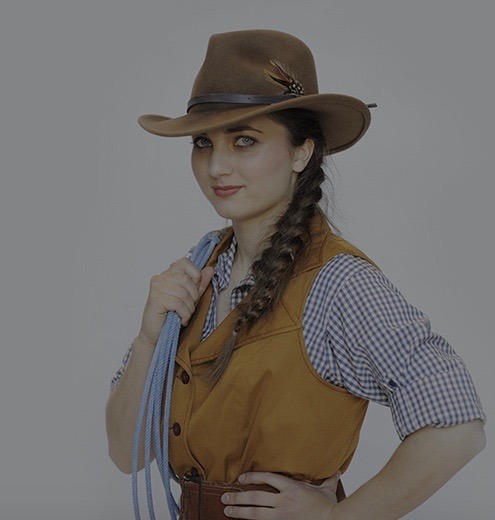
After graduating in 2016, Shena joined Cirque Eloize and is roughly halfway through a two-year contract with its show Saloon. She chats to Liz Arratoon before the show opens at the Peacock Theatre in London, where it runs from 4-21 October 2017.
The Widow Stanton: Are you partly Austrian? I’ve seen pictures of you in the mountains…
Shena Tschofen: My dad’s from Austria. I had the opportunity to go there a lot with my family when I was young. I went almost every summer and as I started getting more involved with other extra-curricular activities I went less and less but I’m still lucky enough to go sometimes. I was there this summer.
What made you start circus so young?
I was a very active child and I was always moving and kind of always bouncing around. I think my parents just decided they were going to give me something to do with all of that kinetic energy. I started in gymnastics when I was three or four but my parents realised really quickly that that was maybe not the best avenue for me. Where I’m from in Minneapolis there happen to be, actually now, three circus schools where you can go recreationally. I trained at all of them; mostly at Xelias Aerial Arts, then Circus Juventos and Twin Cities Trapeze, which is mostly for flying trapeze, but they’re starting to do other stuff, so that’s really nice. I started when I was six and it just kind of went on from there.
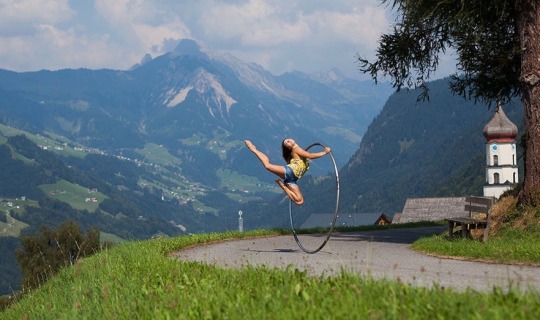
Can you remember the first circus you ever saw?
… I don’t think I can. I’m sure I saw a traditional circus at some point in Europe with my family when I was really young. Other than that I think it was Corteo. It came to Minneapolis. I don’t remember how old I was but it must have been the first official, professional non-traditional circus show that I ever saw.
What sort of disciplines were you doing when you started?
I started mostly as an aerialist; Xelias trains mostly aerial arts because that’s all they have space for, but they train it really well. Later on I got a chance to try a lot of different disciplines: flying trapeze, swinging trapeze, German wheel, Cyr wheel, floor acrobatics… I was really lucky in that I was able to really explore all of these different disciplines before I chose one. It’s nice because now when I go into a company or start working with people, I’m fairly well-rounded. I will not be an expert in 90 per cent of the disciplines that they ask me to do but, for example, whichever aerial apparatus they give me, I can do something with it. That’s a pretty valuable skill to kind of just be drawn into whatever people feel like drawing me into and be able to make something, if not the best thing ever, at least to have…
… something as an extra to your speciality…
What I really like about having had that experience is having my main discipline, Cyr wheel – that’s what I’ve mostly trained so that’s the only discipline that 100 per cent I know that whatever I do is going to be what I want it to be – and all of the other disciplines I’ve tried I’m kind of just able to dabble here and there and see what comes out of it.

And you’re also trained in dance…
I went to an arts high school for two years and chose dance as my major there. Then I went to the University of Minnesota as a dance major, before moving to the circus school in Montreal.
I’ve chatted to many graduates of the Montreal school. You seem to work so hard there…
The school in Montreal has a very specific, very rigorous kind of training but it’s always cool to see the different kinds of training that there are all around the world. I see people coming out of other schools with very different propositions. What’s really cool about the world of circus is that you don’t all just have one style all the time. The Montreal school, yes, it’s very good for technique but if you want something more artistic you might decide to choose another school if technique is not going to be your focus. So I don’t know if it’s necessarily a matter of people working more than others, it’s just kind of more of a focus.
What made you choose Cyr wheel?
When I came to school I didn’t really know what I wanted to do and like I said, I’d had the chance to try a lot of stuff and I had all these opportunities available to me. In the end what made me choose Cyr wheel is because it’s a relatively new discipline, so not everything has been done yet. For example, in a discipline like handstands or hand-to-hand, they’ve been around for so long, and yes, you can always make new things but the vocabulary is already established. Cyr wheel is starting to be more common and to have more of a standardised vocabulary that everyone goes through but I saw when I started that there was not anything that I was going to have to do.

There are certain steps that you for sure have to pass through to get the basic techniques so that you’re able to do what you want, but I was able to create my own vocabulary on the wheel and that was really intriguing to me. When I first saw the discipline I was like, ‘Oh man, I could try all these different things’. It also goes really well with having a dance background. I mean you can come into Cyr wheel with a background as breakdancers… I know people who were gymnasts… there are so many different things that you can bring to this discipline and I saw that I could easily bring my dance background into it and kind of mix it up and create my own thing to play with.
Was there any particular move you found difficult?
I think the hardest thing is always sequencing movements. So yes, there are certain tricks that I worked for several years on and I’m just now getting, but what’s always the trickiest is to link them up so that they’re one continuous flow of movement, or… less continuous flow of movement than the way you want it to be. So a lot of what happens in wheel for me is taking these movements and deciding, ‘OK, what’s the transition from this movement to this movement?’, so it doesn’t just become ‘Here’s a trick, here’s a trick and here’s another trick’. It’s about making it one way of movement.
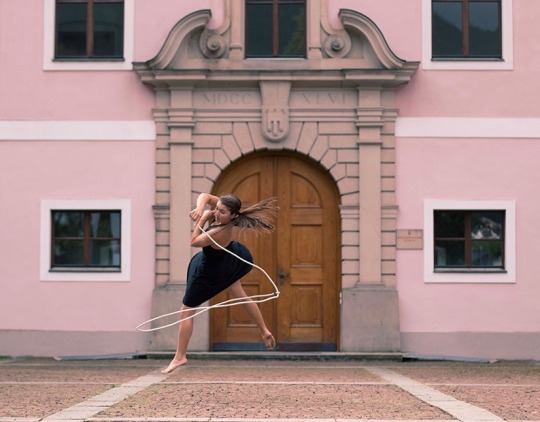
And I’m excited that you’re a lassoist. What made you do that?
The reason I started it – I actually never said I wanted to do it – but I was in a western-themed circus show when I was about 15. It was a youth circus production and they brought in someone who was a professional cowboy. His name is Angelo Iodice – his stage name is AJ Silver – and he came in and taught everyone how to do lasso. I was one of the few people that picked it up and kept playing with it after he left. I did that for a year and a half, and I saw him for a grand total of four or five days or something but most of the time I just messed with it myself. Then I stopped for a while because it was not really useful to anything I was doing.
When I was in school, you have your main discipline and then a minor discipline and I had originally chosen dance trapeze as my minor, but with ten hours of wheel a week and then two hours of dance trapeze my hands hurt so much that I couldn’t hold on to either of my apparatuses. So I let go of dance trapeze and I was like, ‘What can I do that’s not super hard on my body?’. I picked up my lasso again and I was like, ‘Well, I could do something kind of different with this’, because it’s a very cowboy skill, like, I haven’t seen much modern lasso. So I thought, ‘This is kind of like wheel, I can kind of create my own pathway in this’.
So I took that as my minor for a year and a half and when I got out of school I was hired right away for this show because I had these three skills that fit into this world; Cyr wheel, lasso and playing the violin. Then I was able to develop more skills with this and it’s great actually being in this show because I taught everyone the basics of lasso and a couple of us started messing around a bit more. It encouraged me to try more things and experiment more with it. So I’ve learnt most of what I know on this show just messing around with other people.

Have you done any other western tricks?
I learned whip for Saloon. I came in already with lasso, but they were like: “Hey, do you wanna learn whip?” And I was like, ‘Sure’, so I do some whip.
So at school, was there no one who actually taught you lasso?
I had a jugging teacher who helped me but he didn’t know the technique of lasso and neither did I so it was really frustrating [laughs]. But we managed, and it’s funny because there’s a whole other vocabulary that you’re bringing to this skill that already exists but if you don’t really know what you’re doing then you have to make stuff up. So that led me to discover some new things I hadn’t seen before. So yes, I didn’t have a teacher that knew the technique.
What would be your advice be to anyone wanting to take up either skill?
Be very patient. [Laughs] Both disciplines take a while to understand how they work. I’d say lasso is worse in that case than Cyr wheel because it’s essentially a juggling discipline; it’s manipulation. So any manipulation discipline you’re gonna drop all the time, you’re gonna mess it up; it’s the nature of the thing, but Cyr wheel at least, for me, yes, I still mess up but at least I have fun while doing it; the motion of the wheel is really exhilarating to me. It feels like flying a little bit, but lasso is just there and you’re doing this thing with the rope and, ‘Uhh, this isn’t working’.
You make lasso really balletic… it’s beautiful…
Sometimes it works; those pictures are what I did when it worked [laughs].
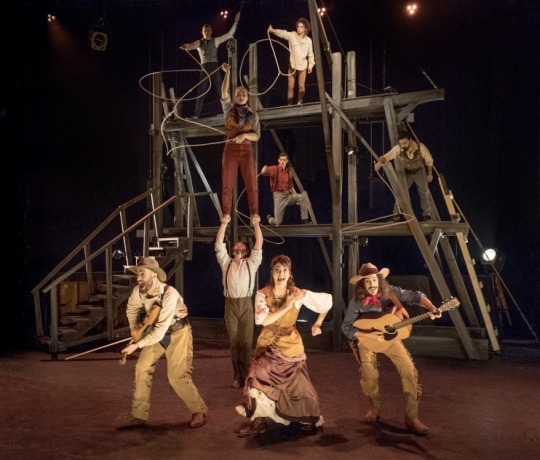
Tell us about Saloon?
This show is really a mix between acrobatics, dance, music and theatre. It’s kind of like a giant mass of all of these different skills and all of these different talents. Everyone onstage has multiple things that they do, which is really cool to see because oftentimes I feel circus people get so specialised in one thing. The company has chosen people who have multiple skills and so we’re all onstage and we all have to sing at one point. We have three professional musicians onstage with us creating live music but also interacting with us as well. They’re not in the background in the band just playing there, they actually come with us onstage and they have their own characters, which is really cool. In terms of my role I’m a cowgirl, [laughs] big surprise. I have my act with Cyr wheel, I also go up on a chandelier and I play fiddle with the musicians.
How have you found being on tour?
We’ve been touring with this show for a year. We started in the US, we went to Turkey, Germany, Switzerland, France, Belgium… we went to Chile in March… it’s really nice. It’s a great way to see all these different places and different cultures and a great opportunity to just explore the world. But sometimes we load in the show in the morning, we do the show at night, we take down the show and we go to the next city. We can do that either every day or we stay two or three nights and those are the most exhausting tours.
youtube
Do you cope well with jet lag?
Not particularly. [Laughs] One of the downsides of touring is all of time you spend in planes trains and automobiles, and all of the time you spend jet lagged. We’ve been pretty lucky in that they don’t usually make us go back and forth in like, 20 seconds. For example we’re going to London but then we’re going to stay in Europe until the end of January, so I only have to do one round of jet lag. I know that once I start doing other contracts it’s most likely gonna be back and forth all the time and I’ll just never not be jet lagged. At that point I’ll just probably get used to it. [Laughs]
What has been the best bit of the tour so far?
All of it has been awesome! Touring always has its ups and downs, but I really love tours where we can go someplace and stay there for a while, which we’ll do in London. That will be great because we’ll have a chance to explore the city. I haven’t been there before. I’m really excited; it’s going to be nice.
youtube
Shena is appearing in Cirque Eloize’s show Saloon at the Peacock Theatre in London from 4-21 October 2017.
For Saloon tickets, click here
Picture credit: Shena on Cyr inside, Roland Lorente; Saloon group, Jim Mneymneh
Shena’s website
Twitter: @cirque_eloize @Sadlers_Wells @peacocktheatre
Follow @TheWidowStanton on Twitter
#shena tschofen#cyr wheel#lasso#cirque eloize#saloon#interview#circus artist#peacock theatre#cowgirl#ecole national du cirque
0 notes